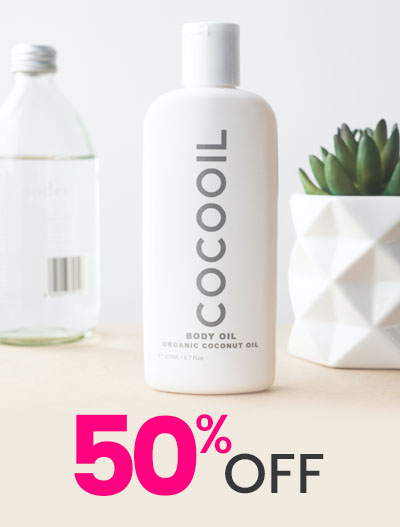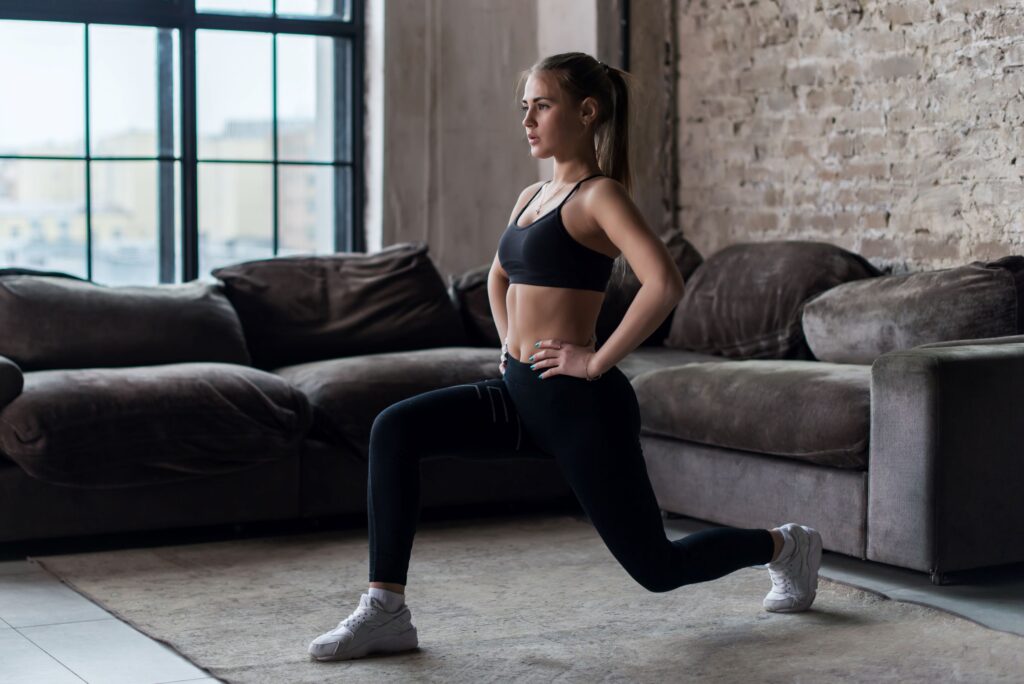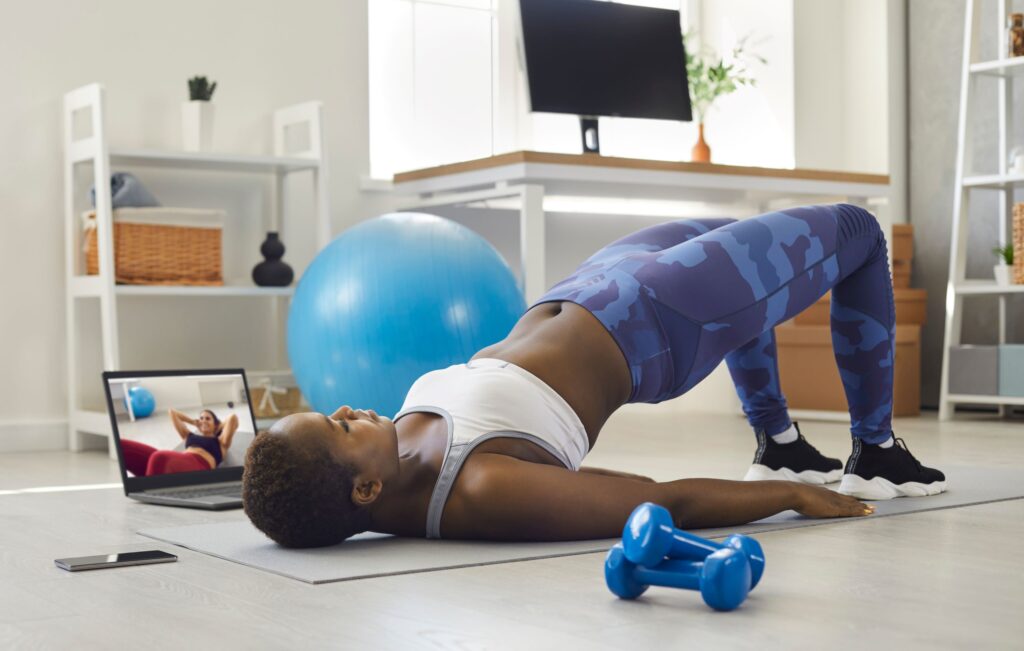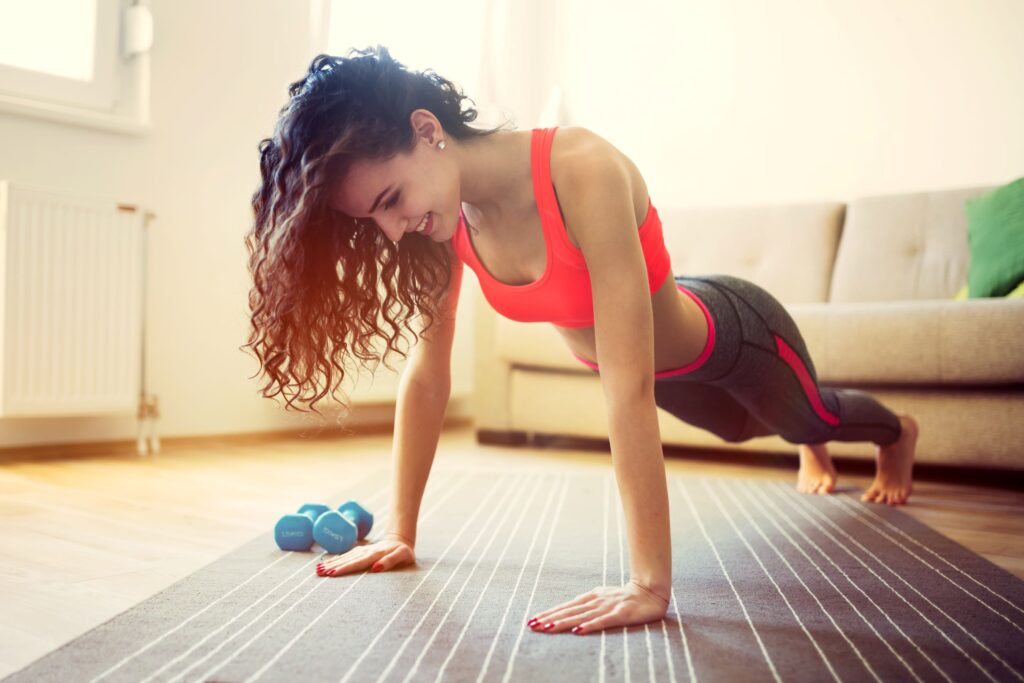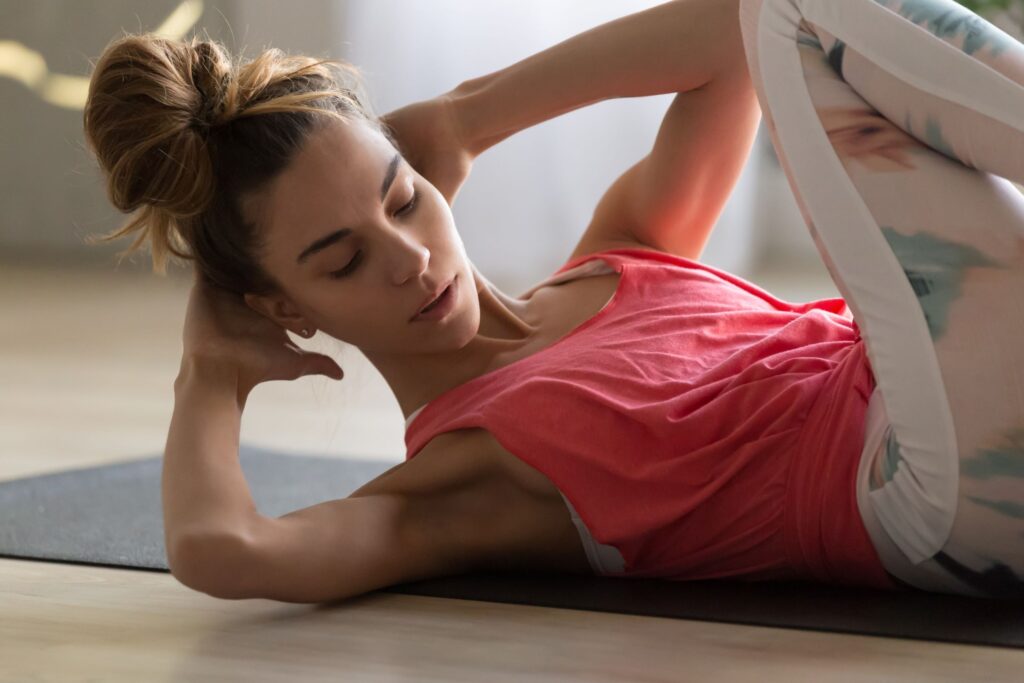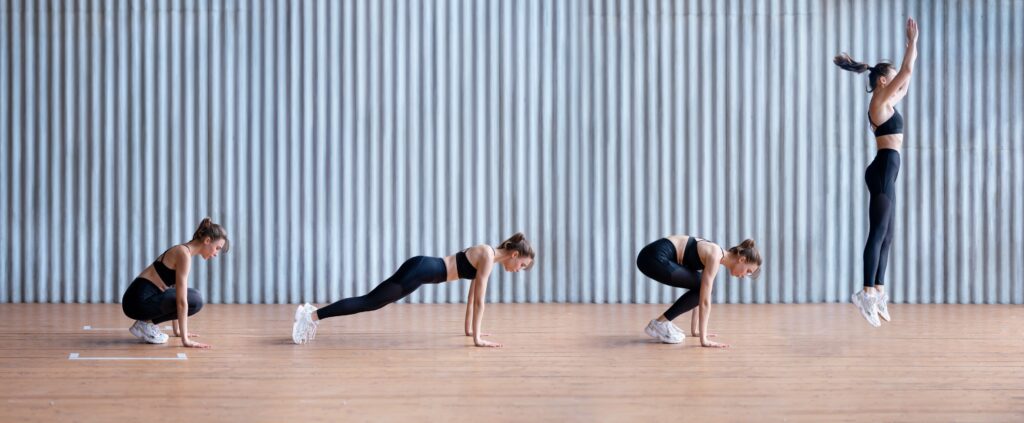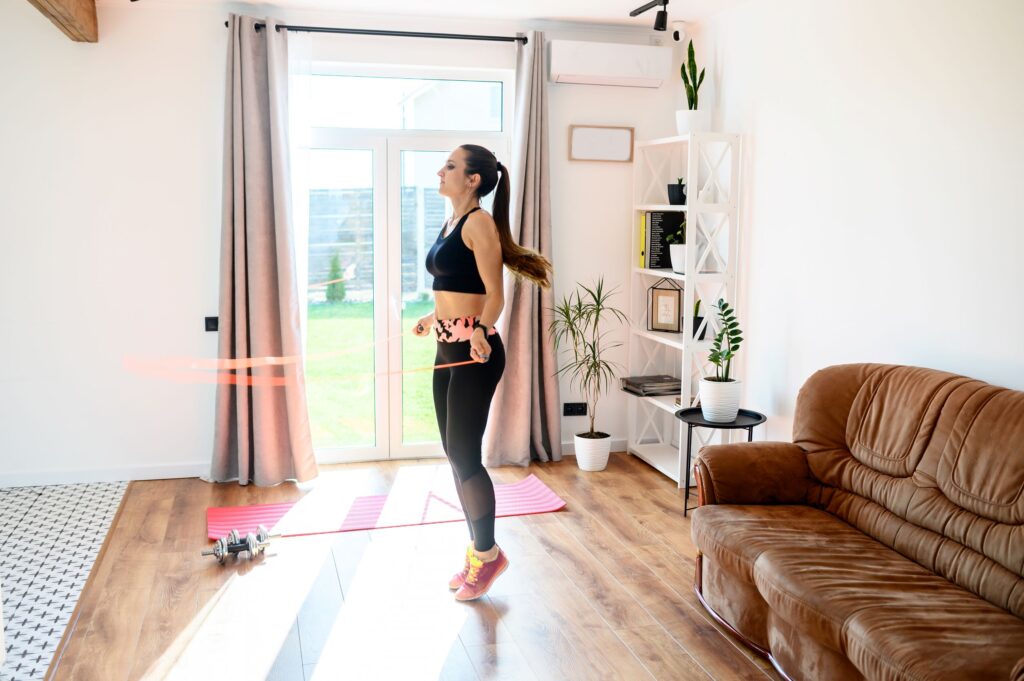The Top Home Workouts to Stay Fit and Healthy
There is no need for much equipment or space to get started.
Even if you don’t have any equipment at home, your body is a powerful machine! Put it to work!
Fitness doesn’t require high-end equipment or a gym membership that’s too costly. Most of the best workouts can be performed at home with your body weight. They target almost all muscle groups.
Whatever you do, getting moving doesn’t require much space or equipment. All you need is an exercise mat and some resistance bands.
In addition to being effective for beginners, bodyweight exercises are also helpful for those of more advanced fitness levels. If you’d like to challenge yourself more, you can add weights to your ankles or hands.
Working remotely requires you to remain active to stay mentally fit. Exercise boosts your immune system and keeps your lungs and airways free of bacteria. Being active has many benefits beyond how you look and how you feel.
Just grab your produce bag, a milk container, or a detergent bottle that acts as dumbbells for your DIY gym. You can also do a wide array of exercises with these resistance bands.
Our trainers have put together a list of their favourite home workout exercises for you to try out.
The exercises should be broken down into two circuits, with each exercise being performed for 12-14 reps, three times per circuit. You should, however, consult your physician before beginning an exercise routine.
19 of the top home workouts for everyone
Squats (Bodyweight)
Stand with your feet hip-width apart and put a chair or box behind you for support if needed. Push your hips back as if you were about to sit down in a chair and lower your butt toward the floor until your thighs are parallel to it (or until they start shaking from fatigue).
Stand back up with control, slowly pushing through your heels rather than heaving yourself up from them (which can cause injury). Repeat for several sets of 12-20 reps each set. As an alternative movement that’s sure to work out those hard-to-reach glute muscles, try a single-arm squat.
Squats (Dumbbell)
Stand with your feet hip-width apart and a fairly heavy pair of dumbbells at arms-length by your sides. Keeping your back straight, push your hips back as if you were about to sit down in a chair and lower your butt toward the floor until your thighs are parallel to it (or until they start shaking from fatigue). Stand back up with control, slowly pushing through your heels rather than heaving yourself up from them (which can cause injury). Repeat for several sets of 8-12 reps each set.
Lunges
You can hold a pair of dumbbells by your side. Stand with your feet hip-width apart, so you’re in a staggered stance. Lunge forward with one leg, bending both knees 90 degrees (or as low as you can go). Your front thigh should be parallel to the floor, and your back knee should almost brush the floor. Pause for two seconds at the bottom of the lunge, then rise back up to starting position. Complete all repetitions on one leg, and then switch legs.
For some variation, you can do walking lunges or try the back lunges.
Walking lunges
This is a classic movie, but it’s still great for toning your legs and firing up your metabolism.
Stand with your feet together or a slight distance apart, arms at your sides and palms facing forward. Squat to the ground until your thighs are parallel to the ground and your knees are slightly bent. Drive back up to a standing position and repeat in a quick circular fashion.
Back lunges
For some reason, these lunges always make me feel like I’m a little kid racing down the sidewalk. It’s hard to explain. But they’re still a great way to work your entire leg and core muscles at once, plus you can do them without any equipment at all.
Use a dumbbell or kettlebell in your right hand and take one step forward with your left foot. Bend low at the waist, making sure to keep a neutral spine. Continue lowering as you reach your left knee toward the floor until both knees are on ground level.
for 20 repetitions on each leg, changing legs as needed. This is one of those moves where you don’t want to land with too much force—so ease into it. Standing up straight after lunging will help tone those glutes!
Glute bridge
A glute bridge is a great way to build strength and stability in your lower body. It’s also great for your abs—as long as you keep your shoulder blades firmly planted to the ground throughout the movement.
How to: Lie on your back with one leg bent and the other flat on the floor. Lift both feet about two inches off the ground, then push through your heels and upper body to lift your hips so that you’re in a straight line from ankles to shoulders. If this is too challenging, try placing one or both hands under your hips while keeping them lifted. Aim for three sets of 10 reps, with 30 seconds rest between sets (then complete another exercise).
Step-ups
These are one of the most common and effective workout moves. Step-ups work the entire leg, shoulders, and core.
You can do some easy step-ups with a wide bench or sturdy box. Step-ups help you build strength, balance, and stability. You can hold a weight or a detergent bottle side-by-side to exert additional force.
Record your reps with a pen or pencil to track your progress as you do 10 or more reps as you go up and down. As a bonus, step-ups can also be used as a great cardio workout across all levels of fitness.
Wall sits
Stand a few feet away from a wall with your feet shoulder-width apart and toes pointed straight ahead. Lean your back against the wall and slide down until your knees are at 90 degrees. Then, sink into the squat position, rocking back on your heels if you need to. Make sure that your thighs are parallel with the ground or lower than that. Hold that position for an extended amount of time as you get used to it, then find ways to add in reps as you get stronger.
Pushups
Start in a high plank position with your left arm and right arm straight, core tight and body in a straight line (no sagging or slouching). Press up from the ground to lower yourself down toward the floor. Pause for a beat at the bottom and push back up to starting position. Make sure to keep your core braced throughout this movement; you should feel it engage with each exhale.
Do sets of anywhere from 12-20 reps depending on what level you’re at, then add weight for more advanced options.
Weighted pushups
Start in the high plank position with arms straight, core tight and body in a straight line (no sagging or slouching). Press up from the ground to lower yourself down toward the floor. Pause for a beat at the bottom and push back up to starting position. Make sure to keep your core braced throughout this movement; you should feel it engage with each exhale. Do sets of anywhere from 8-12 reps depending on what level you’re at, then add weight for more advanced options.
Close-grip pushups (to be done with resistance bands)
All you need here is a simple set of resistance bands, but this is one of those exercises that feels killer even without them — just add more reps or resistance if necessary! You’ll be amazed at how hard these make your work!
The best way to do this move: For each rep, start with hands about shoulder-width apart, wrists straight and fingers pointing toward the ceiling. Keeping arms straightened out fully to form an “O”. Press through forearms and elbows until upper arms are parallel
Lateral raises with dumbbells
Grab a pair of light dumbbells (three to five pounds for women) and stand with your feet hip-width apart. With your arms extended down by your sides at shoulder level, raise them out to the side so that your arms are parallel to the ground at the top of each rep, then lower them back down again. Keep good form and proper alignment throughout:
Don’t let your shoulders rise nearly as high as your ears, and don’t let your wrists bend or turn inward toward each other during any portion of this move. You should feel this in the lateral part of each arm (partly on top between the elbow and shoulder), not in the area between your forearm and wrist (so make sure no part of your arm is moving during most reps).
Do 10 reps on both sides of the body per set; aim for two sets per exercise (a total of 20 reps), starting with one set every other day or so until you feel comfortable moving up to two sets per day on some days.
Crunches
Lie on your back with knees bent, feet planted firmly on the floor and hands behind your head, fingers clasped together near the top of your ears. Engage your abs by pulling them toward your spine as you crunch upward, reaching toward your knees with your shoulders while they stay close to the ground. Don’t pull up so high that you lose control of trying to keep those abs engaged!
For an added challenge, try crunches on an exercise ball or wearing a weighted vest when you can do so safely. If you are just starting crunches, do them on the floor.
Dips
If you’re at home with no equipment, then dips (if you’re sturdy enough) are great ways to engage your arms and core without breaking the bank. If you have a chair or bench in your home, then use that as an elevated surface off of which to do dips.
Again, start slowly with a few reps so that your muscle group will get used to this new movement pattern. You’ll be able to build up how many reps you can do with consistency over time as your body adapts and gains strength.
For both dips, remember to keep good form. Keep your core engaged by pulling in your navel toward the centre of your spine at all times; don’t let anyone ever talk you into dipping lower than 90 degrees. Make sure both of your hands are shoulder-width apart and make sure the surface you’re working out on is stable and sturdy.
Plank pose
The plank pose is arguably the best way to strengthen your core muscles while also lengthening these muscles and improving flexibility in that area.
You’ll start in a push-up position with your hands close together on the floor, shoulders over your hands. Your body should be straight from head to toe with no sagging in any direction, engaging every muscle between your shoulder blades and toes as well as those that are further back just underneath the spine (known as transverse abdominals).
Hold for 10 seconds before moving on to the next move below for additional exercises for those core muscles.
Side plank
This move builds endurance in your core while engaging all of those hard-working muscles on each side of your core (aka obliques). Plus it hits both sides of the torso at once, so you’re working multiple body parts simultaneously!
This is great if you have time constraints and need a quick workout that doesn’t compromise on results.
Begin by lying on one side with a forearm propped underneath you for support. Keep legs together and feet flexed in toward buttocks (toes pointing toward the sky). Engage your core, then slowly lift your body to the side of your arm. Keep abs and spine engaged throughout, and ensure that you need to reach the arm with your opposite hand. Repeat on the opposite side.
Shoulder taps
Try adding shoulder taps to your solid plank to build strength and stability. Performing shoulder taps will strengthen your abdominal muscles too. Don’t worry if you have trouble keeping core muscles engaged; this is just a quick warmup for upper body exercises (like pushups).
Burpees
In addition to being an excellent total-body workout, the burpee is a fantastic calorie burner. An effective way to get your heart rate up, this high-intensity exercise is also a great finale to any full-body workout session.
You can do burpees in a Tabata manner by pushing for 20 seconds and then resting for 10 seconds. Perform this exercise four to eight times to work your entire body!
You can do this exercise at home in the early morning or even before you hit the gym, and it’s guaranteed to get your heart pumping.
Lateral band walk
This is an excellent way to work out the muscles in both legs at once! It also helps strengthen weaker leg muscles while subtly increasing cardio endurance so that you’re not just doing strength training, but also improving overall health.
Begin by holding the middle of the band with one hand and keeping your left arm relaxed at your side (use your other hand to hold the band against your leg). Walk sideways over the middle of the band and return to the start position. Repeat for 30 seconds, then switch sides. Aim for three sets of 30 seconds each, with one-minute rest between sets (or more if necessary).
Jumping rope
This is a great workout for all the major muscle groups, including your right and left leg, arms, and abs.
Jump rope doesn’t require much experience or space to begin. You can burn fat while building muscle. Jump ropes are also a compact and inexpensive exercise tool.
You don’t want to push yourself too hard before working out consistently by doing more than one set during any given session: Your muscles need time in between sets to recover to gain strength without burning out too soon or pushing too hard on any single day!

